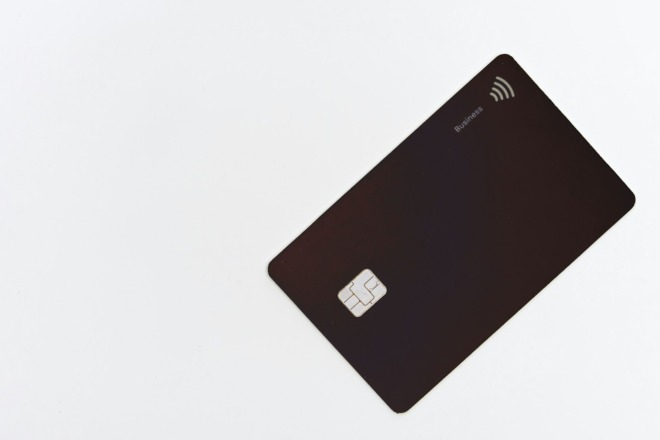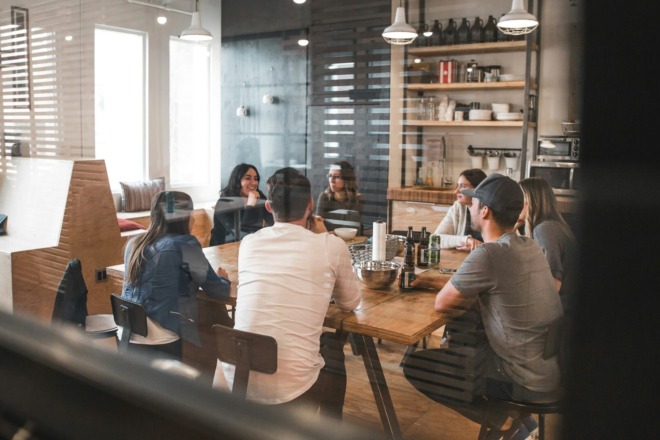Want a boost in creativity? Consider creating a mood board for your creative projects to save the things that inspire you. If you don’t know what a mood board is, think of it as a kind of template, the blank slate on which you visualize your ideas. Mood boards can take many forms – from a digital collage to a real-life bulletin board on which you save whatever gets you in the mood to be creative. The visualization is important, since it’s not always easy to express an idea with words.

What Do You See on a Mood Board?
In order to capture the right “mood” of a project, the board typically includes images related to your project. Let’s say for instance that an author is planning to write a book about a plane trip that ended with the heroine inexplicably waking up in a golden field alongside an empty plane. The mood board could include images of a woman boarding a plane and standing in a wheat field. Since mood boards often include colors, this could inspire the use of the colors sky blue, white, gold and brown. Every image, texture or color that achieves mental stimulation with regard to a project should be included.
Know what colors motivate you and study the psychology of colors and which shades evoke which emotions. For a romance novel, you might choose reds because the color evokes passion and excitement. There is an entire science behind using colors to capture emotions.
Where to Get Resources
Because mood boards are made of images, textures and colors that inspire you, there are hundreds of places on and offline to find resources. If you’re fond of taking photos, than your potential sources become nearly infinite. For simplicity sake, consider places you’re most likely to find the kind of high quality images you’re looking for.
One popular website for this is Pinterest, but you should also consider a Creative Commons search. Niice is an awesome tool for laying out your mood board, though you could also use Pinterest or even print images out. If you want to gather your own sources from your real life surroundings, be sure to stick to relevant images and textures!
Canva is a great tool for finding images and even laying out your mood board online. Although you will pay a fee for their stock photos, you can also upload your own images or use only those you can’t find elsewhere for free.
Additionally, Sampleboard is a digital mood board creation tool that works perfectly to create a simple mood board you can access from anywhere.
Selecting Images and Colors
You’ve gathered everything you’d like to see on the mood board. Now what? First, go through all the images you’ve gathered. If you’ve managed to pick out 50 images for a mood board that will only allow for 15, it’s time to pick your favorites. Remember that a mood board isn’t a collection of random images; they must all come together to offer inspiration on a specific project.
This doesn’t mean that images must be exactly alike. Remember the earlier example? Boarding an airplane and standing in a field are two separate images, and yet because they relate to the same story, they work together to promote a similar mood. Use only those images that are relevant and with which you feel a genuine emotional connection. As for colors, try not to use the entire rainbow; stick to just those colors that remind you of your project.
Laying Out Your Mood Board
You may not be using words, but your mood board still needs to say something important. Anyone who looks at your mood board and hears what project it’s meant to relate to should experience an “Aha!” rather than a “Huh?” A board may be somewhat chaotic or feature solemnly arranged squares and rectangles. What’s most important is that you capture the essence of what you need to say. There is no right or wrong way to arrange your images!
Where to Create Your Mood Board
A popular choice for mood board creation is Photoshop. If you’d rather not pay out cash to use it, there are free image editing tools around, such as the in-browser Pixlr. Betty Red Design is a great source for templates. When your creative energies are scattered, a mood board may be just the right tool for bringing everything into focus. It may take a few hours or even a few days to get it right, but if you make a concentrated effort you won’t be sorry.
While creating your mood board online is quick and easy, you can also go the old-fashioned route and lay your board out on poster board or scale the size down and put it inside the pages of your planner. You can get as fancy as you’d like with a hard copy board, using scrapbooking supplies from retailers such as Hobby Lobby and Michaels or printing out your own visuals to add interest to your board. Set it up in a grid pattern or create a messy collage of images placed here and there until the board is filled. The style of your board should reflect the mood you’re trying to create.
Adding Backgrounds for Continuity
You don’t have to fill every inch of a mood board. It’s perfectly okay to leave a few blank spots here and there and to add a beautiful geometric pattern background to tie everything together. Your mood board may have a lot of different elements, so a background ties everything together and sets the tone without every item having to match perfectly. A background saves you time and effort in creating the overall look of your board.
Let’s say you created a mood board to inspire you on your current project of creating a website for a new client. Your new client is in a cutting edge tech industry, so to show the modern approach of their brand, you use a background made up of geometric swirls and circles. Your images might tie in by showcasing the actual product the company makes and other modern elements that inspire the use of that product.
Leaving Blank Spaces for the Future
As a project progresses, it also tends to shift and change. Leave a few blank slots on your mood board so you can add elements as the project changes or you get to know the brand and its personality better. You may also find new sources of inspiration as you brainstorm with your clients and fellow creative team members. Blank slots give you the freedom to make changes to the mood as you go along and the project grows.
Plugging In Written Inspiration
Even though mood boards typically contain mostly photos and images, it’s perfectly acceptable to add text that inspires you toward that mood. Quotes from famous people or even tips from your own co-workers make a nice addition to the board. Just make sure any text you use is short and to the point. You can even use single words, such as “joy,” “strive” or “goals.”
Short quotations also help inspire you when you lose focus on a project. Look through collections of quotes by famous people or do a Google search for quotes about whatever topic you’d like, such as “quotes about perseverance.”
Pay Attention to Fonts
The fonts you use have a personality as well, so choose a font that reflects the tone of your board. If you are aiming for fun and lighthearted, look to modern fonts created for youth. You’ll want side letters and even some interesting decorative features. On the other hand, if you want a serious tone, stick with more traditional serif style fonts that remind one of the past and draw attention to the words rather than the shape of the type.
Get Your Mood On
A well-designed mood board throws out the emotion you’re trying to tap into at a glance. If you’re finishing up a big art project with a dark tone, then pull out the mood board that makes you feel dark and melancholy, with images of things such as funerals and horrific moments in life. On the other hand, if you’re creating photos you want to have a light and airy finish, pull out a happy board filled with sunny yellows and happy moments such as children splashing through mud puddles or a day at the beach. With the right mood, you can accomplish any creative endeavor you undertake.
About The Author
Eleanor Hecks is the Editor-in-Chief of Designerly Magazine, an online publication dedicated to providing in-depth content from the design and marketing industries. When she's not designing or writing code, you can find her exploring the outdoors with her husband and dog in their RV, burning calories at a local Zumba class, or curled up with a good book with her cats Gem and Cali.
You can find more of Eleanor's work at www.eleanorhecks.com.


